The Types of Termites That Can Damage Your Hardwood Floors and How To Fix Them
If you notice that something is amiss with your hardwood floors, there could be a significant underlying issue causing the problem, such as a termite infestation. Termites are one of the most voracious wood-boring pests, and they often go unnoticed until problems appear and severe hardwood floor damage has occurred. A termite infestation can cause a tremendous amount of damage to a home in a relatively short amount of time. The early detection and identification of termite colonies is an essential key to limiting the damage to your home and your beautiful hardwood floors.
Signs of Termites
The signs of termite damage are not always obvious, but there are certain red flags in your hardwood floors you don’t want to ignore. Known as the silent destroyer, termites primarily feed on dead wood from the inside out. That makes their presence in a home very discreet. Termites weaken the inner structure of your hardwood floor and cause the floorboards to exhibit abnormal sounds and damage.
Different types of termites will make themselves known in several different ways. Subterranean termites, which dwell underground in damp soil, will cause damage to wood floors that look similar to water damage. That can become noticeable in the same way that a leak from a bathroom pipe or rain damage can–through a buckling or warping in the wood, swollen wood ceilings and floors, and a mildew smell that the termites themselves exude.
Drywood termites can cause cracks in the wood floors they’ve infested once their colony becomes well-established. You may notice this, especially in furniture that has become infested with drywood termites. You may even be able to see their tunnels in your walls once those cracks appear.
Cavities carved out by termites will result in hollow sounds. If you think you may have a termite infestation, you can usually listen for these cavities by tapping on the floor with a screwdriver. Hardwoods weakened by termites can also creak or squeak due to movement between loose planks or because the subfloor and supports are often compromised.
A termite infestation can become very dangerous when the destruction causes floors or other parts of the house to collapse. Floors that sag and buckle, have loose boards, small holes, or crumbling wood can indicate possible termite damage. You must call a pest control specialist as soon as possible once you determine that you may have termites. That will help to prevent any further damage to your home.
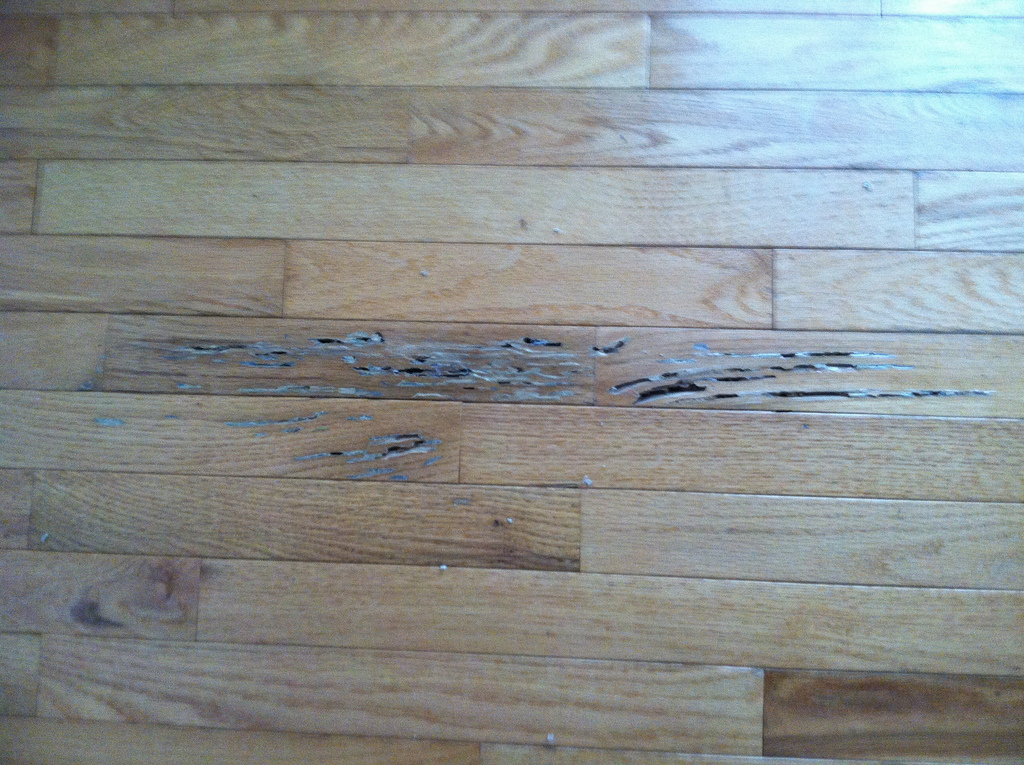
Identification of Pests
There are a few different types of pests that can cause damage to hardwood floors, such as carpenter ants, powder post beetles, or termites. It is essential to correctly identify the insects in order to determine the right course of treatment.
Worker termites have a soft, pale yellow body instead of the hard and dark bodies of other pests. The two wing sets of flying termites are the same size, while carpenter ants have one smaller set and one larger set. Beetles have one pair of soft wings protected by a harder set.
If you notice any swarms of winged insects indoors, discarded wings, or pencil-thin mud tubes on exterior walls, you most likely have a termite problem. Close inspection of the insect and the wood damage can give you clues into what type of colony you are dealing with.
Termites are typically classified into three groups:
-
- Subterranean Termites
- Drywood Termites
- Dampwood Termites
In the next section of this article, we will describe each of these three termite groups in greater detail.
Subterranean Termites
Subterranean termites are the most common termite in the United States, and they cause billions of dollars in structural damages each year. Subterranean termites live in the soil around homes and get through foundation cracks by constructing mud tubes or through the wood touching a house, such as mulch or rotting trees.
Subterranean termites commonly chew along the grain of softwood, leaving a honeycomb pattern. These termites prefer humid and damp areas of the house, such as basements, bathrooms, and attics, so ensuring proper ventilation through your home and keeping humidity low will go a long way in preventing subterranean termites from setting up shop in your home. Subterranean termites are the most destructive native termite species and can do enough damage to cause entire structures to collapse.
Some communities in California, Hawaii, and throughout the Southern United States have become the new home for Formosan termites, another type of subterranean termite that made its way to US soil from Asia. These termites are even more destructive than our native subterranean termites, and their underground colonies can reach as many as 350,000 workers! These termites are very aggressive and fast-moving, which means that they can cause severe structural damage in just a matter of a few months.
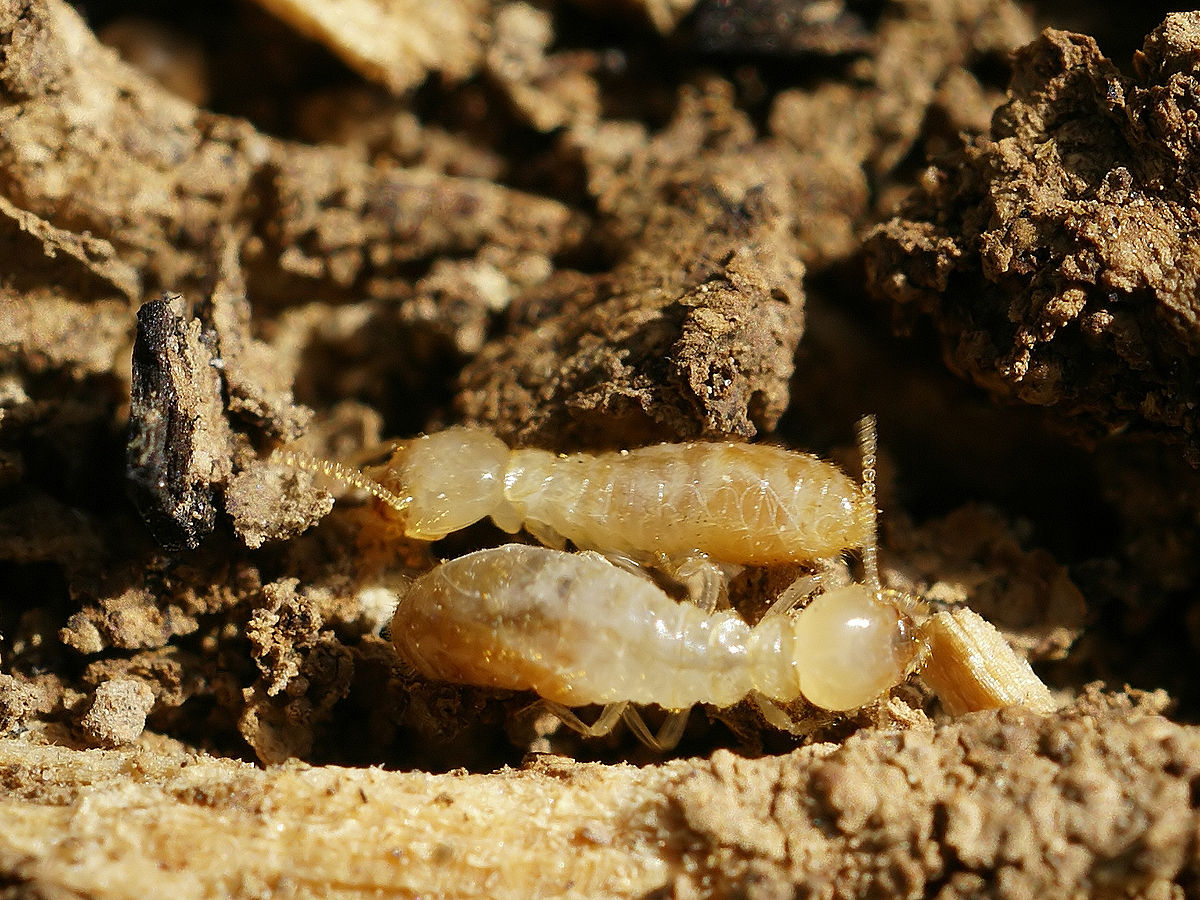
Drywood Termites
Drywood termites make their nests in dry conditions and can invade a home through wood exposure or by way of termite-infested furniture. Drywood termite species tend to eat large wood sections with and against the grain. Drywood termites can make themselves known through their excrement, which they eject out of their tunnels, similar to the way that carpenter ants do.
This waste product will appear similar to fine grains of sand, so if you notice piles of this substance under your furniture or anywhere near your walls, you should check for an entrance to a termite tunnel and examine whether you have an infestation. As their name suggests, drywood termites do not prefer damp or moist wood floors. They prefer drier areas of the home and to feed on newer wood sources that haven’t decayed yet.
Dampwood Termites
Another group of termites is the dampwood termite species. Dampwood termites are attracted to rotting or wet wood on the ground. They can make their way into a home through contact with damp lumber or even water-damaged areas of the house. These termites will usually eat wood against the grain, leaving a smooth surface. Dampwood termites are much larger than subterranean termites, and they are explicitly attracted to wood that has been damaged by water and is decaying. They can hollow out the house’s support beams, weakening the structure and causing vast amounts of damage. Dampwood termites differ from subterranean termites by the fact that they live in moist wood and do not require soil for their habitat before gaining entry to a home.
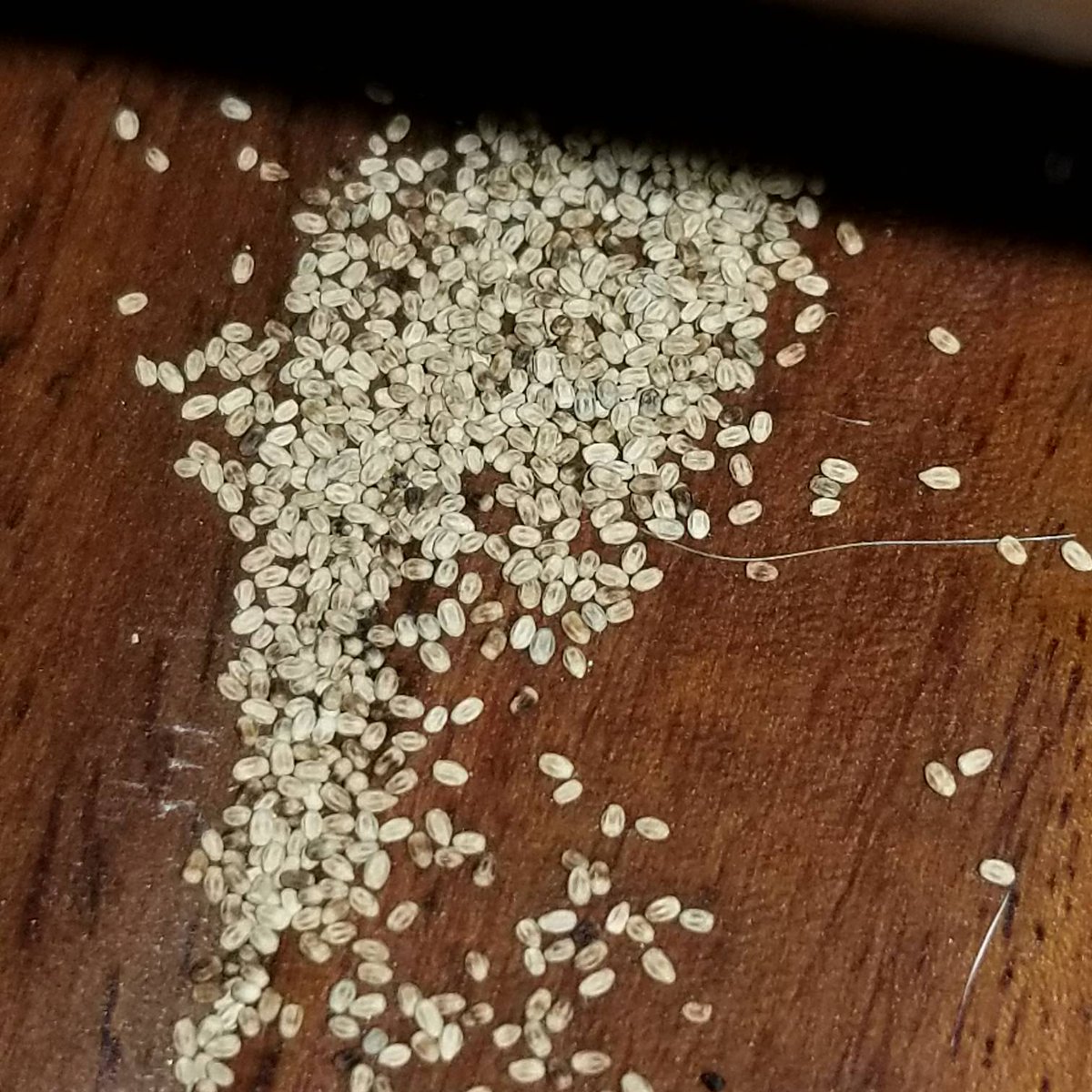
Prevention and Treatment
Regardless of the species, termites can cause devastating harm to wood structures, including a home’s hardwood floors. To help prevent these silent destroyers from invading, keep all rotting wood, such as firewood, as far away from the house as possible. Any wood that’s brought inside should be thoroughly checked. Be sure to search for holes or hollow spaces to house the insects.
It is also advisable that you limit the amount of mulch that is kept in close contact with the home and regularly inspect any wood structures in contact with the ground. You can also prevent termites by using treated wood outside and installing termite shields. Sealing any gaps and cracks in the foundation can prevent subterranean termites, as they can fit through cracks as wide as a business card. If there is any water pooling near the sides of your house, these puddles can lead to termites. So, it is advisable to divert any excess rainwater away from the foundation of your home.
Early detection of termites is essential to limiting the damage they inflict on a home. Routine inspections around the house and of your hardwood floors are crucial. Take notice of any inexplicable damages to your floor and thoroughly investigate any apparent issues. If you suspect you have termites, it is best to have a professional assess and treat the infestation. After a termite infestation has been treated, damaged hardwood floors can be repaired.
How to Fix Termite Holes in your Wood Floor
If termites have left holes in your hardwood floors, the typical course of action is to identify the floor area that has suffered termite damage and remove the damaged pieces. You can replace the damaged hardwood floor pieces with new hardwood flooring secured with finishing nails. These repairs can often be a difficult challenge, especially if you aren’t handy or don’t have much experience doing this sort of home improvement work. Sometimes, it is best to hire a flooring professional to do these hardwood floor repair and refurbishment jobs.
Alternatively, you can fill termite damage using wood filler and a putty knife. Use the putty knife to spread the filler into any holes of hollowed-out areas and leave it to dry overnight. You may be surprised by the results. More significant gaps may require a wood hardener in place of a wood filler.
For more information on how we can repair wood floors in PA, please contact Steve at (215) 515-7355 or info@artisanwoodsllc.com.
Recent Hardwood Flooring Projects in Philadelphia & NJ
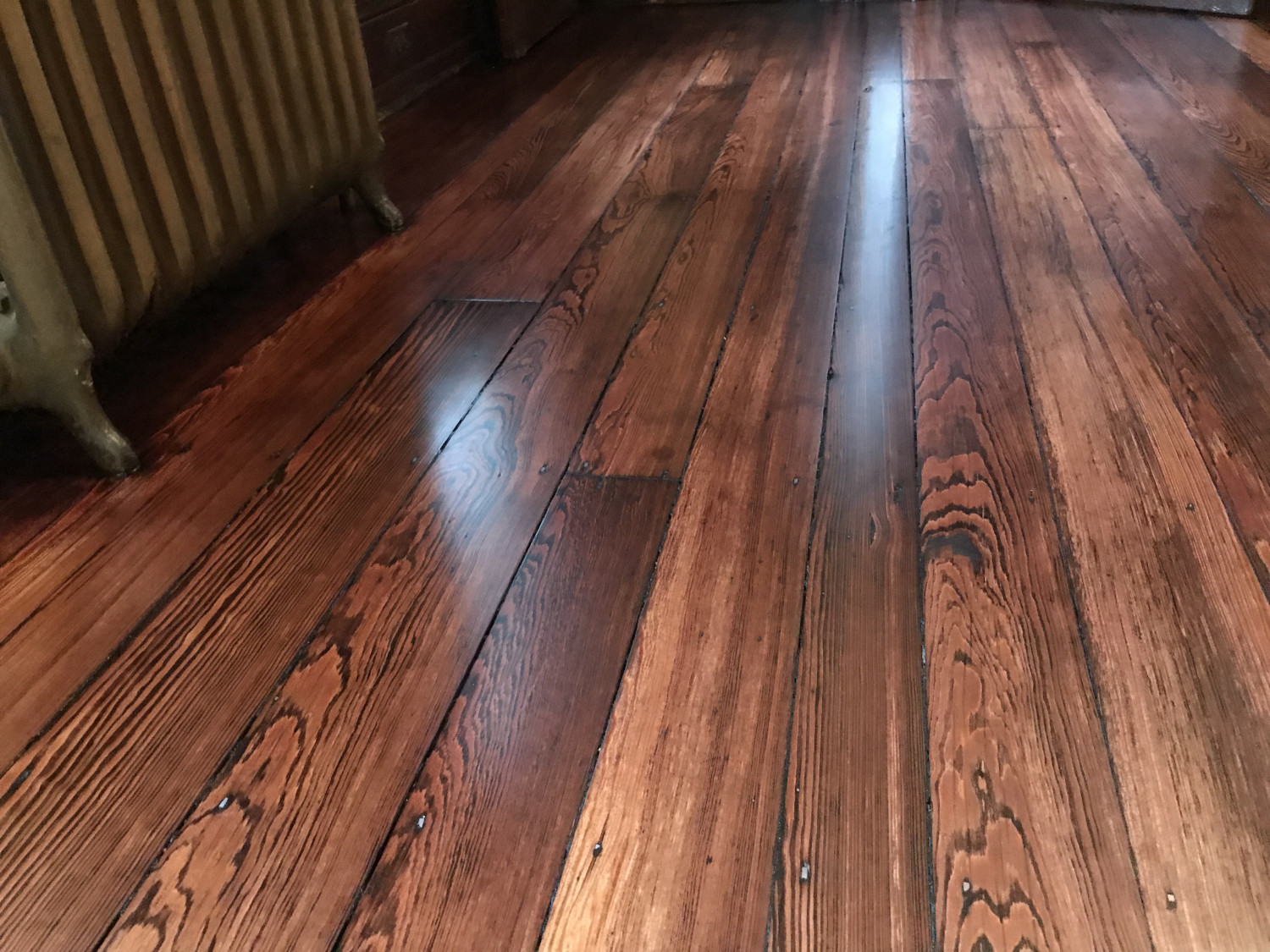
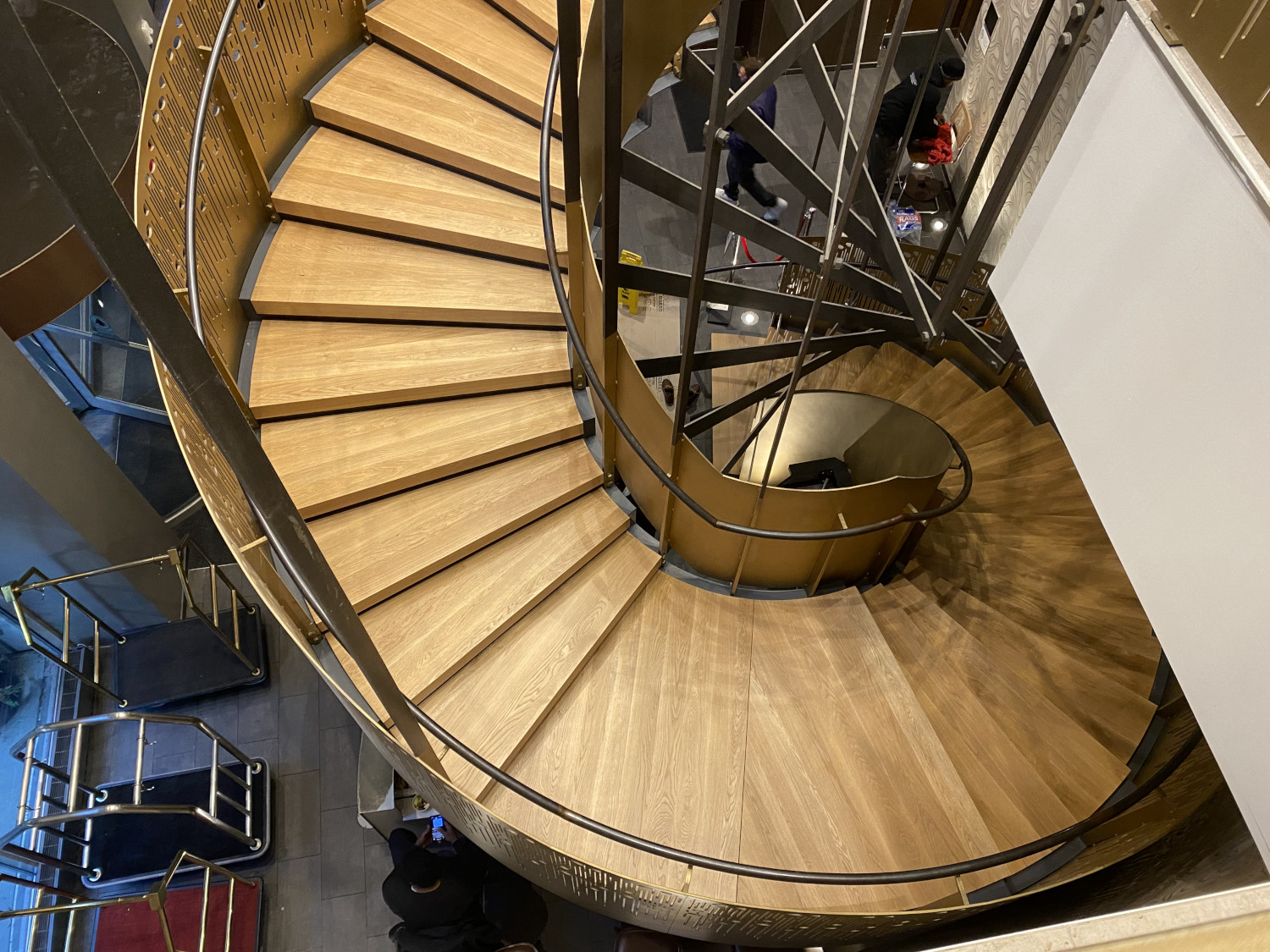


0 Comments